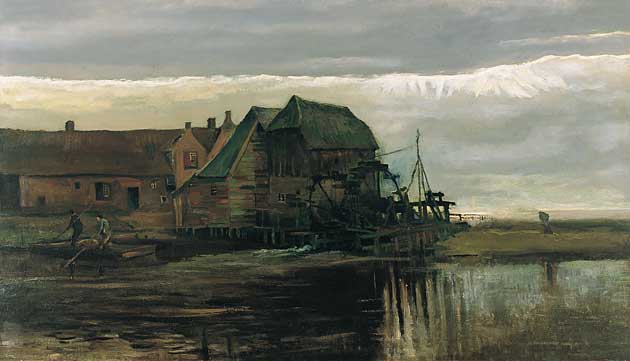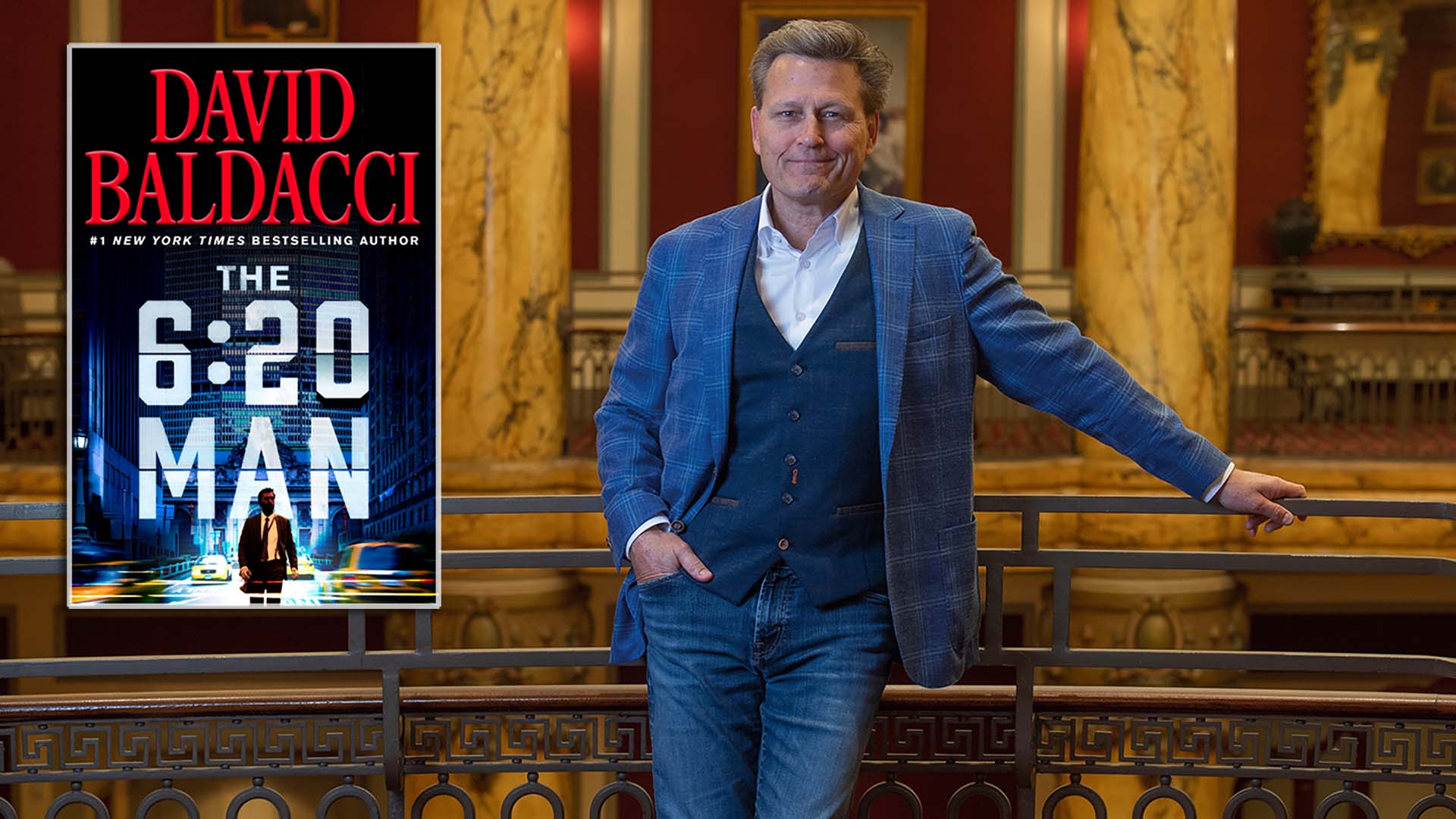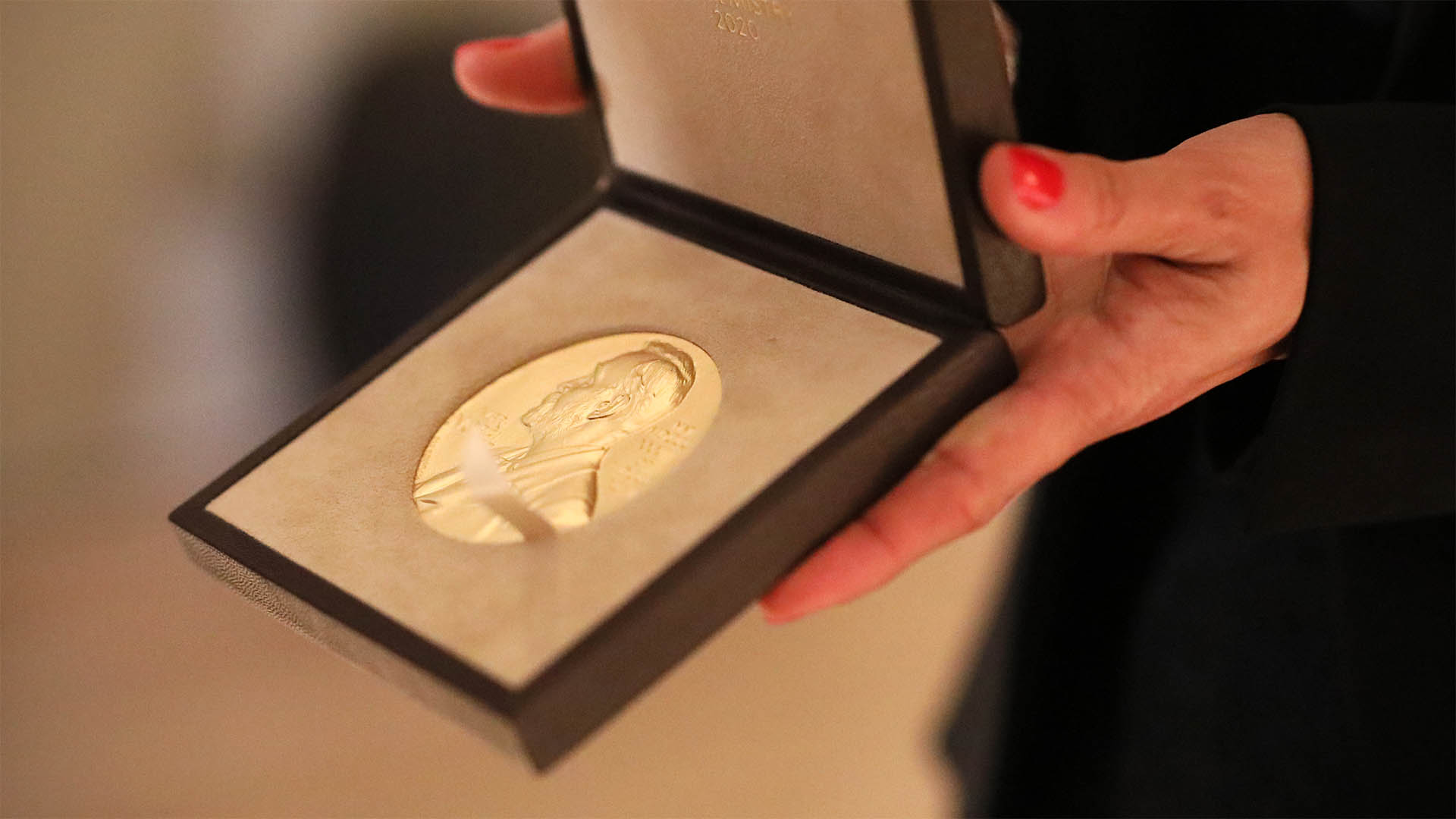Famed Spanish art patron uses island haven in South Pacific to manage her collection.
Tourists who come to Spain’s capital often make a pilgrimage to the museums in Madrid’s so-called Art Triangle. After the Prado and the Reina Sofia, the next stop usually is the Thyssen-Bornemisza. The Spanish state owns the majority of the paintings inside this museum, but it also holds much of the private collection of Carmen Thyssen-Bornemisza, one of the world’s biggest art collectors.
What visitors don’t know as they look at these Monets, Matisses and other masterpieces is that many of them are legally owned by secrecy-guarded companies in tax havens: Liechtenstein, the Cayman Islands, the British Virgin Islands and the Cook Islands.
Van Gogh’s 1884 painting, Water Mill at Gennep, is one of the works Thyssen-Bornemisza purchased with the help of an offshore operative based in the Cook Islands, a South Pacific haven more than 10,000 miles from Madrid.
Documents obtained by the International Consortium of Investigative Journalists show how Thyssen-Bornemisza built up part of her collection buying art from international auction houses such as Sotheby’s and Christie’s through a Cook Islands company. The offshore service provider now called Portcullis TrustNet helped with the arrangements under a secretive structure that connected people in as many as six different countries.
Thyssen-Bornemisza, 69, didn’t reply to ICIJ’s questions directly, but allowed her attorney, Jaime Rotondo, to discuss her art and her offshore companies.
Rotondo acknowledged that Thyssen-Bornemisza gains tax benefits by holding ownership of her art offshore, but he stressed that she uses tax havens primarily because they give her “maximum flexibility” when she moves paintings from country to country.
“It’s convenient,” he said. “You have more freedom to move the assets, not just buying or selling, but also circulation.”
Offshore ownership helps prevent works of art from getting tied up by laws in various countries that can make it “a nightmare” to transfer them across national borders, he said.
Thyssen-Bornemisza isn’t alone in using offshore havens to manage her vast art collection. Many of the multi-millionaires and billionaires who count themselves among the world’s biggest art collectors use tax havens to buy and sell art, experts told ICIJ.
Using offshore entities to buy and sell art “is quite common among the very, very wealthy,” said Hector Feliciano, a Puerto Rican journalist who investigated the commercial side of the art world for his book about Nazi-plundered art, The Lost Museum.
Feliciano said many art dealers and big collectors use companies in the Cayman Islands, Luxembourg, Monaco and other “loosely regulated” jurisdictions to trade and own art in much the same way they use offshore entities to make investments, reduce their taxes and protect their fortunes.
“Art to them is one more thing to be bought and sold,” he said.
The global art market now tops $55.1 billion. The mixing of art and offshore is another example of how the super-rich use tax havens to organize their lives and their belongings — buying and selling art, yachts, homes and jewelry through offshore companies and trusts.
In the United States, a 2006 Senate investigation found that billionaire brothers Sam and Charles Wyly and their families had spent “at least $30 million in untaxed offshore dollars” on artwork, jewelry and furnishings over a 13-year period. A $937,500 portrait of Benjamin Franklin and other items were legally owned by two offshore corporations, but the report said evidence showed that the family held and used these assets in the U.S.
The Wyly brothers denied any wrongdoing, asserting that they were following the recommendations of their financial advisers. Charles Wyly, 77, died in a traffic accident in August 2011.
Thyssen-Bornemisza’s attorney said she paid sales taxes for her paintings in the countries where she bought them, but she doesn’t pay annual wealth taxes on them in Spain or Switzerland, where she holds a passport.
Rotondo said a loophole in Spanish law allows her to live in Spain most of the year, but not declare her wealth or pay taxes. She declares her assets in Switzerland, he said, but she doesn’t have to pay taxes there on her art because assets held in trusts are exempt from taxation under Swiss law.
Had the paintings been owned directly under her name, instead of through offshore entities, she may have been required to pay millions of dollars a year in taxes, ICIJ’s research indicates.
A public secret
Carmen “Tita” Cervera became a celebrity in Spain in 1961 when she won the Miss Spain contest. She was the third runner-up in the Miss Universe pageant. A few years later, she married Hollywood actor Lex Barker, known for playing Tarzan. After Barker died of a heart attack in 1973, she appeared in a few films as an actress and raised a son, Borja.
Her life changed dramatically in 1985 when she married businessman and art collector Baron Hans Heinrich von Thyssen-Bornemisza.
Born in the Netherlands to a German baron and a Hungarian baroness, Hans Heinrich inherited a global fortune with dozens of companies that ranged from glass production to shipping. He lived in several European countries and had four wives — and four children — before he met Carmen.
He himself used offshore to manage his money and his art collection, partly as a way of preserving control and confidentiality amid battles among his children and earlier wives over his wealth, according to Rotondo. The legal owner of the Thyssen-Bornemisza’s family collection was Favorita Trustees Limited, a Bermuda company likely named after Villa Favorita, the family’s home in Lake Lugano, Switzerland, where the collection resided for many years.
In August 1993, just 10 months after the baron opened a museum under his name in Madrid, Favorita Trustees Limited sold 775 paintings — about half of the collection — to the Spanish state for $350 million. Spanish law considers Bermuda as a tax haven.
That same year Carmen “became fully aware of her role as a collector,” according to the museum’s website. She began building up her own art collection using the same secretive structures used by her husband.
In March 1994 Nautilus Trustees Limited was incorporated in the Cook Islands with the help of TrustNet, the offshore services provider, internal records show. The company’s 2,000 shares were put in a “bearer certificate.” Whoever held that piece of paper, held their ownership. It was immediately sent to prominent law firm Lenz & Staehelin in Zürich to be kept safely. A month later TrustNet incorporated Sargasso Trustees Limited, using similar procedures.

Rotondo said the Swiss lawyers used corporate structures that obscured shareholders’ identities because she needed to “protect” the art work from the aging baron’s sons at a time when it was unclear how his wealth would be divided after his death. The family tradition of fighting over his fortune would continue until he died in 2002.
Nautilus Trustees Limited appears to be the vehicle Carmen Thyssen-Bornemisza used to purchase Water Mill at Gennep, a work on which Van Gogh, painting entirely outdoors in November 1884, tried out “pure touches of colour for the first time, bringing him closer to Impressionism and heralding his mature style,” according to the Thyssen-Bornemisza museum.
It was sold at a Sotheby’s auction in London for £500,000 ($760,000) on June 24, 1996. Three weeks later TrustNet received correspondence about the sale at its offices in Rarotonga, the Cook Islands’ capital. TrustNet faxed a note to alert the Swiss firm Lenz & Staehelin — its contact for Nautilus Trustees Limited.
“Please find enclosed various correspondence received from Sotheby’s. In particular we have received correspondence as to the purchase of ‘Watermill Gennep’ [sic] by Vincent Gogh [sic],” the July 18, 1996, letter said.
The Van Gogh did not end up in Rarotonga nor Zürich. It landed in Madrid at the Thyssen-Bornemisza in late 1996 — the same year Carmen’s private collection was first shown in public.
Between July 1995 and November 2002 TrustNet received at least 31 invoices and statements from Sotheby’s and Christie’s for Nautilus Limited, then called Nautilus Trustees Limited. The correspondence shows charges for £202,912.50 (about $300,000) from Christie’s in London in relation to “an export licence” and $302,605.06 for Sotheby’s client account number 3012374.
TrustNet records also include six invoices from Momart, an international art transport company.Other correspondence came from the Metropolitan Museum of Art in New York, Kunsthaus Lempertz in Cologne, Germany, and auction houses Bonhams and Phillips.
Today Carmen Thyssen-Bornemisza’s public collection includes around 700 works of art, records show. According to a recent official estimate, it’s worth more than half a billion dollars.
It not only includes Water Mill at Gennep but also paintings from renowned artists such as Canaletto, Munch, Picasso and Goya. Apart from Madrid’s museum, some are shown in Barcelona, and about a third of the pieces are now exhibited in a new museum with her name in Málaga, in the south of the country, which opened in March 2011.
The Carmen Thyssen-Bornemisza collection remains in Spain temporarily, though, given up “for free” thanks to a loan agreement signed in 1999 with then-Minister of Culture (and now Prime Minister) Mariano Rajoy. It was due to expire in 2011, but it has been renewed yearly since then — although the number of paintings has decreased 35 percent because of the move to Málaga. In return, the public foundation that owns the Thyssen-Bornemisza museum in Madrid receives around €4 million annually in subsidies. Public funds also paid for an expansion between 2002 and 2004.
The yearly agreement is published in the Boletín Official del Estado (Official State Gazette). It states that the contract is signed between the foundation, presided by the Minister of Culture, and “Omicron Collections Limited, Nautilus Trustees Limited, Coraldale Navigation Incorporated, Imiberia Anstalt and the Baroness Carmen Thyssen-Bornemisza.” The four companies mentioned are all incorporated in tax havens.
Although Swiss magazine Bilan ranked her as the seventh-richest woman in Switzerland, with an estimated family fortune between $1.6 billion and $2.1 billion in 2011, Carmen has complained that most of her wealth is tied up in art. In May 2012 she announced she had to sell one of her masterpieces — The Lock, by Constable — because she needed cash.
“I may be a millionaire in art, but not in liquidity,” she said.
The Lock’s auction at Christie’s in London closed at £22.4 million ($34 million), making it one of the most expensive British paintings ever sold. Thyssen-Bornemisza’s attorney confirmed she sold it through Omicron Collections Limited, her company in the Cayman Islands.
A (new) family battle
A change in Cook Islands law in 2003 required Thyssen-Bornemisza to send her “bearer certificate” to TrustNet. But her lawyers couldn’t find it — not in Zürich, Bermuda or Madrid, correspondence shows.
Emails from the end of 2004 indicate that she was no longer the sole shareholder of Nautilus Trustees Limited. Her then-24-year-old son Borja had 45 percent of the company. Both were using an address in Andorra, a landlocked microstate tucked between Spain and France, which has had a long history as a tax haven. Some months later, the company was renamed as Nautilus Limited. Sargasso Trustees Limited was closed by then.
Borja Thyssen-Bornemisza declined, though his lawyer, ICIJ’s request to comment.
Having endured a family quarrel over her husband’s fortune, which ended with a secret agreement in 2002, Carmen now is in the midst of a new family battle. Both mother and son are engaged in a legal fight disputing who owns what, and reportedly the two hardly talk since Borja married in 2007. In an October 2011 interview Carmen denied they had any companies in common.
Among the several issues in question, there are two paintings. Borja said that a Goya and a Giaquinto, with an estimated value of $9 million, were his. Carmen said that they were from the baron and he never gave them to her son. They are both owned by Cayman Islands-based Omicron Collections Limited.
Borja lost that case because he could not prove that the paintings were his.




